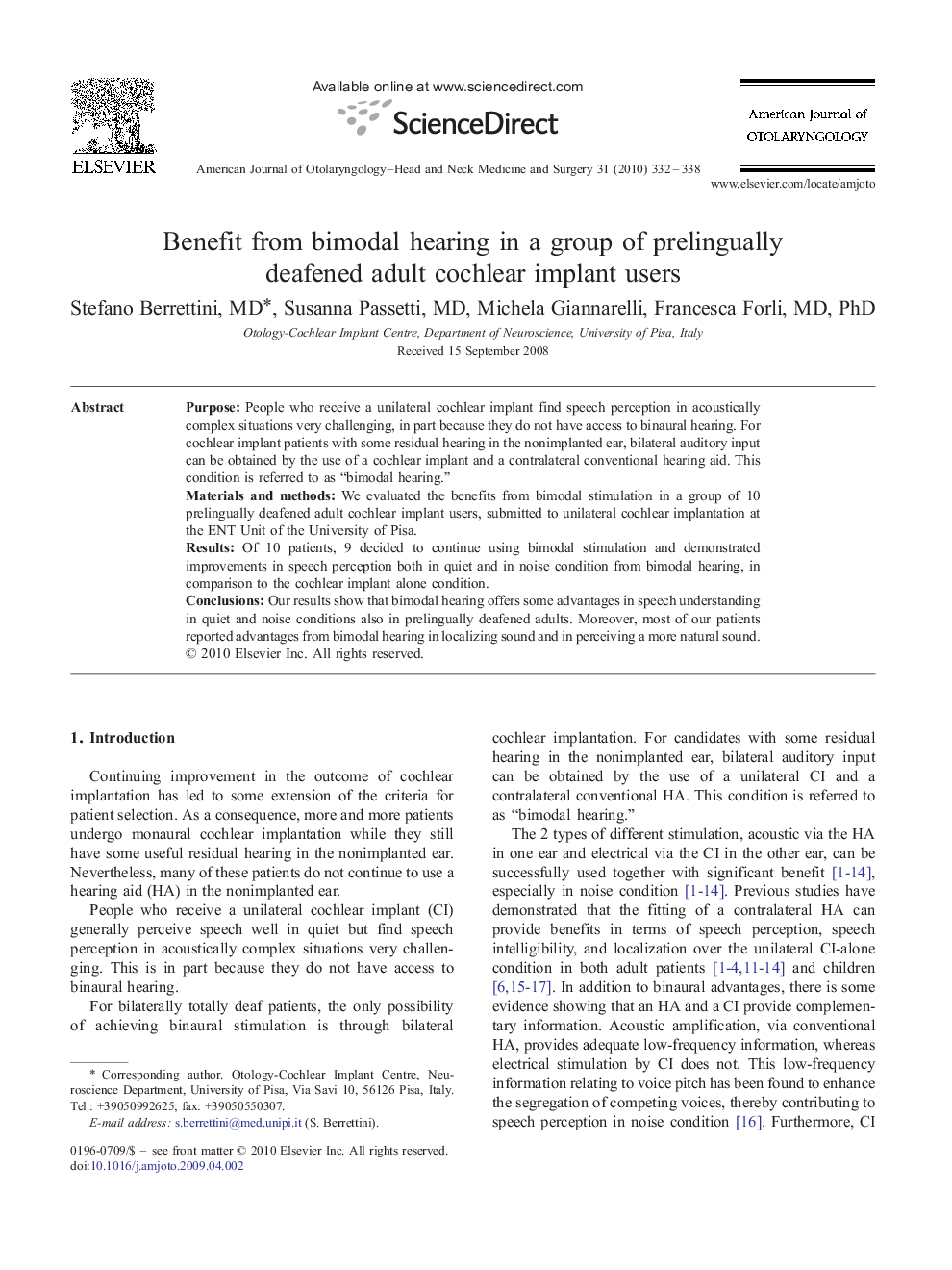| Article ID | Journal | Published Year | Pages | File Type |
|---|---|---|---|---|
| 4103984 | American Journal of Otolaryngology | 2010 | 7 Pages |
PurposePeople who receive a unilateral cochlear implant find speech perception in acoustically complex situations very challenging, in part because they do not have access to binaural hearing. For cochlear implant patients with some residual hearing in the nonimplanted ear, bilateral auditory input can be obtained by the use of a cochlear implant and a contralateral conventional hearing aid. This condition is referred to as “bimodal hearing.”Materials and methodsWe evaluated the benefits from bimodal stimulation in a group of 10 prelingually deafened adult cochlear implant users, submitted to unilateral cochlear implantation at the ENT Unit of the University of Pisa.ResultsOf 10 patients, 9 decided to continue using bimodal stimulation and demonstrated improvements in speech perception both in quiet and in noise condition from bimodal hearing, in comparison to the cochlear implant alone condition.ConclusionsOur results show that bimodal hearing offers some advantages in speech understanding in quiet and noise conditions also in prelingually deafened adults. Moreover, most of our patients reported advantages from bimodal hearing in localizing sound and in perceiving a more natural sound.
